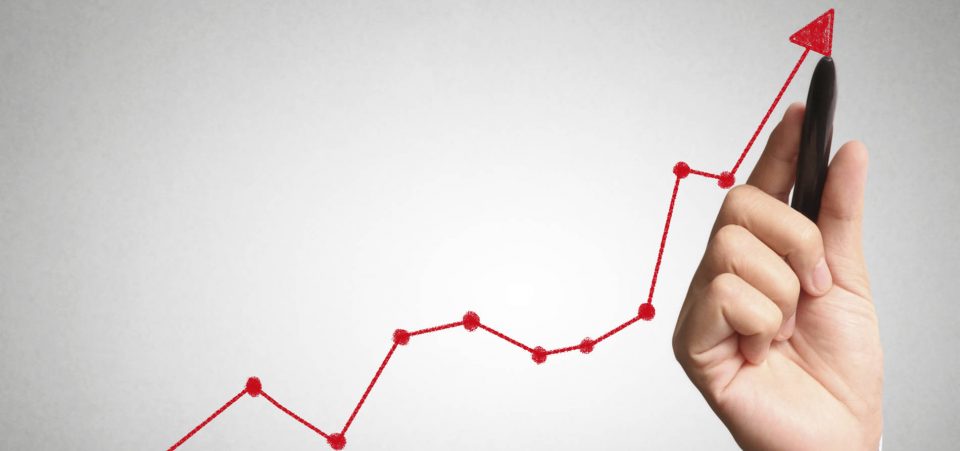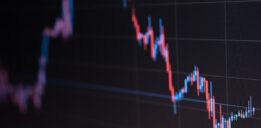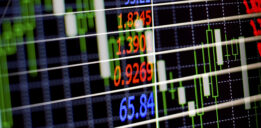Stock Market Crash Getting Warmed Up
Is a U.S. stock market collapse just around the corner? U.S. stocks continue to trade near record highs and more and more investors are increasingly optimistic that the long-in-the-tooth bull market is going to run unabated.
But the writing on the wall points to a stock market crash in 2016. Weak economic data coming out of the U.S. and abroad, deteriorating corporate earnings, overvalued stocks, and the eventual rising of interest rates all point to a stock market crash.
Wall Street may be saying these warning signs are being blown out of proportion but these are the same analysts who also failed to see the stock market crash in 2000 and 2007. They would have probably said the same thing in 1929 too.
Most people believe the stock market is a barometer of the U.S. economy. If stocks are doing well so too must the U.S. economy. The strong the stock market the stronger the U.S. economy. Which, on the surface, makes sense, after all, the stock market is a forward looking indicator.
So you’d be forgiven for looking at the S&P 500 and deducing the U.S. economy is doing anything but firing on all cylinders. Since bottoming in March 2009, the NASDAQ has advanced more than 250%; the NYSE is up 130%, the S&P 500 has soared more than 189%, and the Dow Jones Industrial Average has climbed almost 150%.
This is one of those times when the numbers are more than a little misleading. Stocks are up absolutely. And investors have made serious money. But those gains have not come as a result of strong quarterly and annual earnings growth.
Four rounds of Quantitative Easing and artificially low interest rates hovering near zero may have helped those flush with money make even more money…BUT it’s decimated the retirement plans of those who relied on fixed income investments like CDs, Bonds, and Treasuries to provide them with steady income and help them through retirement.
Because investors can no longer rely on these investment vehicles they’re forced to park their money in riskier investments like the stock market. And it’s paid off so far. Six years after the first round of quantitative easing and the stock market is still near record levels.
This is in spite of years of underwhelming revenue and earnings growth. Or even a contraction. Corporate America can only prop up their earnings by cutting costs and buying back shares for so long. And investors will only prop up shares for so long.
Eventually, one time important factors like earnings and valuations will need to run in step. Investors aren’t known for being patient though; especially after years and years of easy gains. A stalled stock market could spook investors and send them running for the exit. Which will send stocks reeling.
Yes, after years of climbing steadily higher, there are signs that this is already starting to happen. Since the beginning of 2015, the NASDAQ is down almost five percent; the NYSE has lost 11.5% of its value, the Dow Jones is off more than 10%; and the S&P 500 has trimmed 8.5% of its value.
If this was a stock Wall Street would be telling investors to SELL!!! But because it’s the broader market, they’re simply ignoring the warning signs. Speaking of which, here’s a good one. The 12-month average level of the S&P 500 has fallen for two straight months. That has only happened twice since 1995: ahead of the dot-com crash and the 2007-2009 bear market. (Source: Bloomberg.com, September 30, 2015.)
Corporate Revenue and Earnings Deteriorating
The stock market is starting to show signs of cracking because of falling revenue and profits and fears of what higher interest rates will do to a fragile economy. This is not the foundation upon which a geriatric bull-market can thrive.
Nor should it. There has to be a day of reckoning. Or in this case, a stock market crash or major correction to put stocks in their proper place. This doesn’t mean stocks will stay defeated. Over the last six years we’ve seen that investors have short memories, can shake off any negative news, and send stocks higher. But I’d like to think a major correction or stock market crash would at least give them pause. Time will tell.
Anyway, stocks are soaring but the trajectory is misguided. Case in point, 2013 was a great time to be an investors with the S&P 500 soaring roughly 30%. Why were investors rewarded so richly? Was it because of strong earnings? Nope. It was because earnings and revenue were not as bad as predicted.
Investors rewarded Wall Street mediocrity for not hitting the gutter.
In each successive quarter of 2013, a larger number of companies revised their earnings guidance lower. In a so-called economic recovery, we like to see businesses revise their guidance higher.
During the first quarter, 78% of S&P 500 companies that provided preannouncements issued negative earnings guidance. In the second quarter, that number climbed to 81%; in the third quarter it hit a record 83%, and in the fourth quarter a new record of 88% was achieved.
The curtain is just about to close on the third quarter of 2015 and not much has changed. Because of downward revisions to earnings, the estimated blended earnings decline for the third quarter is -4.5%. This is a far cry from the forecasted blended earnings decline of one percent at the start of the third quarter.
If the index reports a decline in earnings in the third quarter it will mark the first back-to-back quarter of earnings decline since 2009. Yes, it’s only one quarter of earnings declines, but in the grand scheme of things, this could be the start of a dangerous trend. (Source: Factset.com, last accessed September 29, 2015.)
What about third quarter revenue? Third quarter revenue is expected to decline -3.3%. Not surprisingly, this is much higher than earlier projections of a year-over-year decline of just -2.5%.
Fear not however, analysts project earnings to recover in the fourth quarter of 2015…along with record EPS levels. Revenue growth is projected to return in the first quarter of 2016.
How any analyst looking at the data can forecast these growth levels is beyond me. It makes absolutely no sense. 2016 may be a new year but that doesn’t mean investors are going to celebrate. In fact, investors could be in for a rude awakening come January.
Nose Bleed Stock Market Valuations
I’ve said it before I’ll say it again, the stock market is only as strong as the underlying stocks. Which again, if you look at the S&P 500 is a little misleading. By all accounts, U.S. stocks are doing really, really well. But…they’re not. At least according to three leading stock market indicators.
According to the Case Schiller CAPE/PE Ratio, the S&P 500 is overvalued by around 62.5%. The index is currently sitting at 23.96, the 10-year average is 15. What this means is that for every $1.00 of earnings a company makes, investors are willing to fork out $23.96. The ratio has only been higher three times: 1929, 2000, and 2007. Each time it was followed by a stock market crash. (Source: Yale University, last accessed September 29, 2015.)
The second indicator pointing to a stock market crash is the Market Cap to GDP Ratio. It also goes by another name, the Warren Buffett indicator. Just like the clever name suggest, compares the total price of all publicly traded companies to gross domestic product (GDP). The implication being that stocks and their valuations should bear some relationship to the benefits of investing or not investing.
A reading of 100% suggests U.S. stocks are fairly valued. The higher the ratio is over 100%, the more overvalued the stock market. And, the lower the Warren Buffett ratio is under 100% the more stocks are undervalued. The current reading is 123.6%. The ratio has only been higher once since 1950, in 1999, it was at an eye-watering 153.6%.
A third indicator is the Wilshire 5000 to GDP (a variant of the Market Cap to GDP Ratio). The Wilshire 5000 is a market cap weighted index of all stocks actively traded in the U.S. Instead of 5000 though, the index contains around 3,700 components. This ratio is currently at 124.2%. Since 1970, the ratio has only been higher once; in 2000, when it stood at 136.5%. (Source: Stlouisfed.org, last accessed September 30, 2015.)
All three of these indicators suggest stocks are overvalued and at lofty, unsustainable levels. The U.S. economy is not doing as well as we’re being led to believe. And eventually, stocks and valuations will run in step. But to get there, stocks need to crash.
Sponsored Advertising Content: This Will Hit Americans Harder Than Anything Since the Great Depression
Rising Interest Rates Will Shock Global Markets
The U.S. is not and never has been an economic island. Nor is the stock market. And more and more U.S. companies are relying on more and more foreign countries for growth. The percentage of sales from foreign countries for S&P 500 companies has increased for the last five years; from 46% in 2009 to 47.82% in 2014. (Source: spindices.com, last accessed September 22, 2015.)
Unfortunately, the global economy is not doing very well. In fact, global stock markets are being routed on growing fears of a global recession and the continued slump in commodity prices. North American investors may be optimistic but the global markets are at a two-year low.
The International Monetary Fund (IMF) has warned of a new financial crisis. Particularly in emerging markets after central banks begin to raise interest rates. Many expect the Federal Reserve to raise its overnight lending rate for the first time in nearly a decade later this year.
Why it’ll be interesting to see how the U.S. and global stock markets react, it could impact emerging markets first. That’s because they’re anchored to American borrowing rates. Rising global interest rates could result in a new credit crunch in emerging markets as businesses that have taken advantage of cheap money (debt) are stretched with higher interest payments.
According to the IMF, the debt of non-financial firms in emerging market economies quadrupled to over $18.0 trillion in 2014. What does that mean? Business debt as a share of economic output has soared from less than half in 2014 to almost 75%. (Source: imf.org, last accessed September 29, 2015.)
China, the world’s second biggest economy, led the charge to higher debt followed closely by other emerging economies including Turkey, Chile, and Brazil. All of which are vulnerable in a higher interest rate environment.
The fact is, emerging markets are entirely unprepared to meet higher borrowing costs. As a result, we could see a rash of corporate failures around the world. Mirroring the U.S. financial crisis, foreign banks that bought much of this new debt could tighten lending, putting a halt on potential growth. To see what that would end up looking like, consider the U.S. credit crisis of 2008-09.
Corporate stagnation could spill over to the financial sector as banks continue to reign in lending. This could translate into reduced economic activity and ongoing losses to the financial sector. And banks could fall like dominos.
Easy monetary policies might (it’s still unproven) be advantageous in advanced economies, but who knows what it will do to emerging markets. Even a token increase in U.S. interest rates could have a catastrophic effect on emerging markets. (Source: theguardian.com, September 18, 2015.)
That doesn’t mean developed economies will be immune to interest rate hikes. Borrowing has risen fastest in sectors most vulnerable to an economic downturn, including oil and gas and construction.
2016 Stock Market Crash
The Federal Reserve’s easy monetary policy (quantitative easing) was supposed to kick-start the U.S. economy. Instead, the U.S. economy remains weak and U.S. stocks are wildly overvalued.
Moreover, artificially low interest rates translated into unprecedented corporate borrowing….everywhere. And the inevitable rising interest rates will seriously undermine economic growth in those countries most susceptible to an economic downturn.
The U.S. economy is weak, wages are stagnant, debt levels are up, and personal savings are depleted. Elsewhere, the global economy is teetering on a recession with China, Japan, and the eurozone all seriously underperforming. I’m not even going to bother mentioning Russia.
Raising interest rates in this kind of environment could cripple the U.S. and global economies. Here at home, it could wipe out cash strapped Americans, negatively impact corporate earnings and eventually, share prices. Rising U.S. interest rates could also have a huge impact on emerging markets and trip up glacial growth in the eurozone, Japan, and China.
What can the Federal Reserve and central banks around the world do to avoid the next recession and stock market crash? Lower interest rates? They’re already at zero. And that hasn’t helped. Do central banks really want to adopt a negative interest rate policy?
The U.S. bull market is living on borrowed time. And the upcoming stock market crash is on the not-so-distant horizon. Where is the stock market headed? Will the stock market crash in 2016?
Thanks to rising interest rates, collapsing earnings, and sky high valuations, U.S. stocks will experience a major correction in 2016. This could also be the year that the U.S. stock market collapses.






